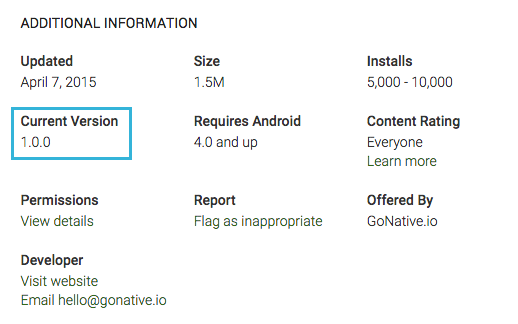App Identifiers
Set a Bundle ID and Package Name for publishing. These are identifiers for your app registered with the Apple App Store and Google Play Store. They can be changed for licensed apps at any time before your app is published.
iOS Bundle ID
The Bundle ID is never visible to end users. However, it is required to match the provisioning profiles and certificates you set up in your Apple developer account prior to publishing.
Apple recommends the Bundle Id follow reverse domain name service notation. For example, if your website is example.com, your Bundle Id might be com.example.app.
Android Package Name
Unlike the iOS Bundle ID, your app's Android Package Name is visible to users in your app's Google Play Store URL. It is not possible to change your app's Package Name once your app is published.
Google also recommends the Package Name follow reverse domain name service notation. For example, if your website is example.com, your Package Name might be com.example.app.
Note that dashes or spaces are not allowed, and it's not permitted to start any section of the package name with a number.
Android Version Name
Your app's Android Version Name will be visible to users when they view your app on Google Play. The Version Name must be formatted as x.y or x.y.z (e.g., 1.7 or 2.14.3) and must be incremented each time an update is published to Google Play. We recommend setting the first version number for your app to be 1.0.0 or 1.0, and then incrementing thereafter.

Example Android Version Name
Updated 12 months ago